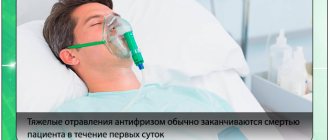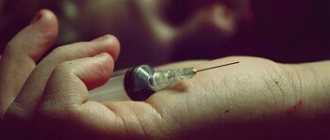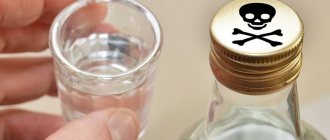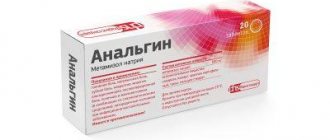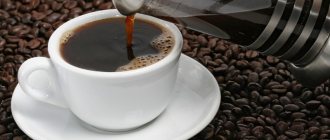Panangin is a drug widely used in cardiology. It contains two active substances: potassium and magnesium. This drug should be used only if strictly indicated . The dosage and duration of treatment can only be prescribed by the attending physician. Self-medication and uncontrolled use of this drug are very dangerous. An overdose of panangin can lead to severe disruptions in the functioning of the body. This article discusses its symptoms, treatment and consequences.
Who is Panangin contraindicated for?
Potassium and magnesium affect the contractility of the myocardium - the muscular middle layer of the heart, which makes up the bulk of the organ's mass. Insufficient intake of substances into the body threatens increased blood pressure, atherosclerosis, abnormalities in heart rhythm and metabolic changes in the muscles of the organ.
For the functioning of life support systems, the balance of microelements and their compounds is important. An excess of calcium and magnesium ions negatively affects the functioning of the heart muscle: as a result, metabolic processes will accelerate too much and the organ will not withstand it. In the absence of medical care, the situation threatens with irreversible consequences. Panangin should be taken only as prescribed by a doctor and in a strictly prescribed dosage.
A number of diseases in which an increase in the concentration of potassium and magnesium in the body threatens serious complications:
- Myasthenia Gravis (an autoimmune neuromuscular disease characterized by rapid fatigue of striated muscles);
- kidney abnormalities;
- alcohol poisoning;
- hyperkalemia and hypermagnesemia;
- metabolic disorders in tissues;
- atrioventricular block I–III degree (heart rhythm disturbance due to a problem in the passage of impulses through nerve cells);
- hemolytic anemia (rapid destruction of red blood cells);
- pathologies of the adrenal glands (Addison's disease, in which the synthesis of cortisol is disrupted);
- shock;
- violation of the acid-base balance in the body;
- dehydration;
- allergic reaction to the components of the drug;
- age under 18 years - no studies have been conducted.
Panangin is not recommended for use during pregnancy and lactation. An exception is cases when the benefits of the drug are higher than the possible consequences due to side effects. Breastfeeding should be stopped while taking the drug.
Ventricular fibrillation: how to help a patient and save his life
Features of the disease
Ventricular fibrillation (VF) is characterized by chaotic contractions of myocardial tissue. Their frequency increases from 250 to 480 per minute. The movements of the ventricles cease to be coordinated. As a result, blood circulation stops and the heart stops.
The ECG produces irregular and chaotic waves that vary in width, height and shape. At the beginning of the attack they are high-amplitude. This is the so-called large-wave fibrillation. Afterwards, the waves become low-amplitude and their duration increases. At this stage, the effectiveness of defibrillation decreases.
Often this condition occurs as a complication of extensive myocardial infarction.
Prevalence, stages of development
About 75-80% of sudden deaths that are caused by cardiac problems occur due to VF. This disease occurs in both young and old people.
The risk group includes those patients who have suffered sudden circulatory arrest. Unexpected death affects 10-30% of such patients.
Fibrillation is characterized by random contraction of the muscle fibers of the heart. The stages of development of the disease quickly replace each other: the patient feels weak, loses consciousness, and his pupils dilate. About 2 minutes pass from the onset of the attack to clinical death.
Classification of species
Experts distinguish 3 types of VF after heart attacks: primary, secondary and late. Although discussions regarding the classification of this disease are still ongoing.
Primary fibrillation occurs 1-2 days after a heart attack. It shows that the myocardium is characterized by electrical instability, which resulted from acute ischemia.
About 60% of primary VF occurs within 4 hours, 80% - 12 hours after a heart attack. Such fibrillation often leads to sudden death. With left ventricular failure and cardiogenic shock, secondary VF sometimes develops in people who have suffered a myocardial infarction.
If fibrillation began 48 hours after a heart attack, it is called late. About 40-60% of people who experience this disease die. In most cases, such fibrillation begins 2-6 weeks after a heart attack. More often it developed in those people whose anterior wall of the heart was damaged.
Causes of development and risk factors
In most cases, the cause of primary and other types of gastric fibrillation is a complication of myocardial infarction. Experts identify the following reasons for the development of VF:
- IHD of the heart (acute and post-infarction, coronary circulatory disorders);
- hypertrophic cardiomyopathy: death occurs in young people with excessive physical exertion;
- dilated idiopathic cardiomyopathy: fibrillation begins against the background of hemodynamic disorders in half of these patients;
- problems with the right ventricle (arrhythmogenic cardiomyopathy);
- different types of heart defects (the most common cause is aortic stenosis);
- specific cardiomyopathies;
- violation of the electrophysical characteristics of the myocardium.
The disease sometimes develops even in the absence of problems with the heart muscle. Risk factors that in some cases lead to ventricular fibrillation include:
- a sharp decrease in blood volume (this causes a drop in pressure and an increase in heart rate);
- severe poisoning (hypokalemia develops and cardiac excitability increases);
- hypothermia of the body;
- hormonal imbalance that arose due to pathologies of the thyroid gland;
- chronic stress or excessive nervous tension;
- overdose of drugs: diuretics or cardiac glycosides.
There are cases when the cause of ventricular fibrillation cannot be determined.
Symptoms and signs
You can suspect VF in a person based on characteristic signs:
- after 5 sec. the person becomes dizzy and weak;
- in 20 sec. the patient loses consciousness;
- after 40 sec. from the onset of the attack, the patient experiences characteristic convulsions: the skeletal muscles begin to contract once tonically, and at the same time defecation and urination occur involuntarily;
- after 45 sec. from the onset of ventricular fibrillation, the pupils dilate and reach their maximum size after 1.5 minutes.
The patient sometimes has time to complain about:
- strong heartbeat;
- dizziness and weakness;
- heartache.
External signs include:
- pallor of the skin and mucous membranes;
- rapid breathing, shortness of breath;
- loss of consciousness;
- absence of pulsation in large arteries.
Doctors have 4 minutes to restore heart rhythm. If this cannot be done, then irreversible changes begin in the body.
Find out more about the disease from the video:
Diagnostics and emergency care
Experts determine ventricular fibrillation by external signs. If the doctor is near the patient during the onset of the attack, he will diagnose:
- increased heart rate;
- lack of rhythm;
- difference between heart rate and pulse;
- no difference between I and II heart sounds;
- wheezing in the lungs.
Before doctors arrive, it is recommended to do the following:
- Make sure that a state of clinical death has occurred.
- It is necessary to “start” the heart: in the absence of a defibrillator, a sharp blow is given to the sternum.
- In cases where the heartbeat is not restored, artificial respiration and cardiac massage begin. If resuscitation is carried out by 1 person, then for 2 insufflations he makes 15 rhythmic pressures on the sternum.
More details about resuscitation measures are described in the video:
An ECG is done in a hospital setting or in ambulances. This examination allows for differential diagnosis and establishment of an accurate diagnosis.
With ventricular fibrillation and flutter, the ECG will show the following signs:
- P waves are in most cases absent before ventricular contractions;
- chaotic frequent waves instead of the necessary QRS complexes;
- with flutter the waves will be rhythmic, with ventricular fibrillation they will not.
Treatment tactics
In the hospital, all actions are aimed at restoring the heart rhythm. These measures are called cardioversion. Doctors perform chest compressions and artificial ventilation. Insufflation of air allows you to provide the body with oxygen.
Electropulse therapy gives good results. The sooner it is carried out, the higher the patient’s chances of survival.
Some argue that after 3 ineffective defibrillator shocks, the patient should be intubated and put on artificial respiration.
VF is continued to be treated with sodium bicarbonate. Injections are given every 10 minutes until blood circulation is restored.
They increase the effectiveness of electrical pulse therapy by intracardiac administration of the drug “Adrenaline hydrochloride”. But such injections are fraught with complications.
If defibrillation is ineffective, then in addition to Adrenaline hydrochloride, Anaprilin, Novocainamide, and Lidocaine are administered. The patient continues to undergo cardiac massage and artificial respiration, defibrillation is repeated after 2 minutes.
In cases where the heart stops after electrical pulse therapy, the drugs “Calcium chloride” and “Sodium lactate” are administered.
Rehabilitation
After ventricular fibrillation, the patient is monitored.
His condition is constantly monitored using a Holter ECG: this is done continuously for 1-7 days.
Treatment is aimed at preventing recurrence of attacks.
If patients experience fibrillation due to heart disease, then surgical intervention is performed. Surgeons can install a device that will correct the myocardial rhythm.
The radiofrequency ablation method is also used - this is the introduction of a special device that destroys the pathological focus of abnormal heart rhythm.
Drug antiarrhythmic therapy is also carried out. To prevent possible complications, anticoagulants are prescribed. They prevent increased blood clotting and reduce the likelihood of developing a heart attack. They also recommend products that improve metabolism and nourish muscles.
Possible consequences and prognosis
In most cases, complications occur after VF. The prognosis will be better in cases where assistance is provided in the first seconds of an attack. But it is difficult to avoid the negative consequences of this condition.
When the heart stops, total myocardial ischemia occurs. After blood circulation is restored, dysfunction of the heart muscle appears.
The following complications may also develop:
- the appearance of arrhythmia;
- lung problems: aspiration pneumonia, tissue damage due to rib fractures;
- neurological problems (arise due to a temporary deterioration in blood circulation in the brain tissue);
- thromboembolism: blockage of blood vessels by blood clots.
Preventive methods, preventing relapses
Monitoring the work of the heart muscle can reduce the likelihood of developing VF. If the slightest deviation appears, you must consult with doctors and follow their instructions.
Doctors recommend reconsidering your lifestyle. Need to:
- give up cigarettes, alcohol, drugs;
- focus on plant foods and dairy products;
- exclude smoked, fried, fatty foods from the diet;
- reduce salt intake;
- Lead an active lifestyle, but avoid overload.
It is difficult to provide competent, timely medical care for ventricular fibrillation. After all, an attack does not always begin in the hospital. Because of this, this disease is considered the leading cause of sudden death due to heart problems. You can reduce the likelihood of its development if you monitor the condition and adhere to the basics of a healthy lifestyle.
Causes of intoxication
Lack of microelements is observed in older people who are at risk. Due to age-related changes, a person forgets or skips taking a medication and may reuse the medication.
In some conditions (shock or abnormalities in heart rhythm), the patient stops soberly assessing the situation and, in a panic, may take several Panangin tablets at once.
Children are at risk - to prevent problems, the drug is stored out of the reach of minors.
Interaction with other drugs
Panangin increases the concentration of potassium and magnesium ions in the blood. Drugs with which the drug should not be combined:
- antibiotic tetracycline and products based on it;
- angiotensin-converting enzyme inhibitors;
- iron supplements;
- diuretics;
- painkillers;
- metabolites of vitamin D3 and other medications that enhance the absorption of microelements in the body.
If taking drugs prohibited with Panangin is necessary, consult a doctor. The doctor will give instructions, draw up a schedule for taking medications and explain how to avoid complications and poisoning.
What drugs should you not combine Panangin with?
The drug Panangin has a direct effect on the electrolyte composition of the blood. It should be combined with other medications with great caution . Doctors do not recommend taking it in parallel with:
- tetracycline;
- iron supplements;
- ACE inhibitors;
- potassium-sparing diuretics (diuretics);
- anesthetic drugs;
- calcitriol, etc.
If you need to combine pananagin with other medications, you should consult your doctor. He will give you recommendations that will help you avoid complications and drug poisoning.
Signs of an overdose of Panangin
Symptoms of Panangin poisoning appear within 20–30 minutes after taking the drug. The more the dose is increased, the stronger the clinical manifestations of overdose.
Symptoms caused by excess concentrations of trace elements (Mg, K) in the blood:
- confusion, loss of strength, muscle weakness;
- problems with heart function: arrhythmia, bradycardia, cardiac arrest;
- increased anxiety;
- nausea and vomiting, intestinal pain, diarrhea;
- low blood pressure in the arteries;
- violation of the water-salt balance in the body (dry mucous membranes and skin, cracks on the lips);
- rush of blood to the skin of the face;
- sensitivity disorders, numbness of limbs;
- paralysis and muscle paresis.
With severe hypermagnesemia, depression of deep tendon reflexes, respiratory paralysis, and coma are noted.
Drug interactions
As already indicated, the drug should be taken only after consultation with a doctor.
At the same time, it is very important to inform him about other medications that you use, since Panalgin can interact with them and cause harm to the body.
When using iron salts and Tetracycline, sodium fluoride, this drug inhibits their absorption. In this regard, it is necessary to leave an interval of at least 3 hours between doses.
Hyperkalemia may develop due to the simultaneous use of potassium-sparing diuretics or ACE inhibitors. Therefore, it is extremely necessary to monitor the concentration of potassium in the blood. Neuromuscular blockade can be provoked by the parallel use of Decamethonium, Suxamethonium, Atracuronium, Succinyl chloride. Magnesium concentration is increased by taking Calcitriol.
First aid for poisoning
If less than 2 hours have passed since taking the excess dose, you will need to cleanse your stomach. The victim is given a lot of water to drink and vomiting is induced by pressing on the root of the tongue. The procedure is repeated 2-3 times.
The action of sorbents is aimed at neutralizing and adsorption of drug residues in the stomach and intestines. In case of an overdose of Panangin, the following drugs are used:
- Atoxyl;
- Activated carbon;
- White coal;
- Polysorb;
- Enterosgel;
- Smecta.
The victim is recommended to drink clean table water (mineral water is not allowed) in large quantities to activate the excretory system and remove excess potassium and magnesium ions with urine.
Important! An overdose of Panangin is life-threatening. At the first signs of poisoning, you must call an ambulance.
In case of severe poisoning and loss of consciousness, the victim is placed on a flat surface and his head is turned to the side. To ensure that the brain receives a sufficient amount of oxygen, a pillow or other object is placed under the victim’s knees: the feet should be higher than the level of the head. If the heartbeat stops, they begin to massage the heart and stimulate breathing through artificial respiration.
Features of the use of No-Shpa for hypertension
Compound
Magnesium aspartate 140.0 mg
(in the form of magnesium aspartate • 4 HtO - 175.00 mg) and potassium aspartate 158.0 mg
(in the form of potassium aspartate • 1/2 H20 - 166.30 mg).
Silicon dioxide, colloidal - 2.00 mg, povidone - 3.30 mg, magnesium stearate - 4.00 mg, talc - 10.00 mg, corn starch - 86.10 mg, potato starch - 3.30 mg in tablet core .
Macrogol 6000 - 1.40 mg, titanium dioxide Col. ind. 77891, E171 - 5.30 mg, methacrylic acid copolymer E 100% - 6.00 mg, talc - 7.30 mg.
Description
Round, biconvex, film-coated tablets, white or almost white, with a slightly shiny and uneven surface, almost odorless.
the most important intracellular cations K and Mg play a key role in the functioning of numerous enzymes, in the formation of bonds between macromolecules and intracellular structures and in the mechanism of muscle contractility.
The intra- and extracellular ratio of potassium, calcium, sodium and magnesium ions affects myocardial contractility. Endogenous aspartate acts as a conductor of ions: it has a high affinity for cells, due to the slight dissociation of its salts, ions in the form of complex compounds penetrate into the cell.
Pharmacokinetics
Absorption is high. Excreted by the kidneys.
Description
Treatment
Ambulance doctors examine the victim, measure pulse, blood pressure, and take a cardiogram. In case of overdose, it is recommended to inject an antidote into a vein - calcium chloride, which neutralizes the effect of the drug.
The decision to hospitalize the victim in a medical facility (in intensive care or toxicology) is made depending on the patient’s condition. In case of Panangin poisoning, doctors pay attention to the content of the drug components in the blood. Depending on the analysis data, corrective treatment is prescribed.
Note! When there is a threat of death, hemodialysis is performed - purification of the blood from toxic substances through an artificial kidney. Peritoneal dialysis is rarely used - a method of purifying the blood by injecting a special solution into the abdominal cavity.
Conditions of sale and storage
Store at temperatures up to 30 °C, in a dry place, out of reach of children and protected from light.
Best before date:
- Tablets – 5 years;
- Solution – 3 years.
You can purchase the drug at a pharmacy. This does not require a doctor's prescription. Optimal storage conditions:
- temperature 23 - 28°;
- dark place with natural ventilation;
- inaccessibility for children.
When purchasing a medicine, you can ask for a certificate of compliance with quality standards and a license for sale. In this case, the possibility of purchasing a counterfeit is eliminated.
What are the possible consequences?
An overdose of Panangin threatens dysfunction of vital organs. The victim may die from respiratory or cardiac arrest or fall into a coma. To prevent the development of negative consequences, Panangin is recommended to be taken only after examination and as prescribed by a doctor.
The most common cause of poisoning is incorrect dosage regimen and inattention of the victim. If poisoning cannot be avoided, seek qualified medical help.
Panangin is a medicine that, according to its properties, belongs to medications for arrhythmia. This is a mineral supplement that is used to normalize metabolic processes in the muscle layer of the heart. An overdose of Panangin occurs when it is abused. Since the drug is prescribed mainly to older people, repeating the course of taking pills is a possible phenomenon due to forgetfulness.
If Panangin poisoning occurs, it is important to know how to deal with it and what preventive measures to take.
Reviews
Reviews about the use of this medicine are only positive; patients note an improvement in the condition and functioning of the cardiac system. Let's look at the most popular reviews.
Read further - indications for use of Nebilet. When should you take the drug?
In the article (here) the price of Felodip.
Price for Nifecard!
Natalya Ivanovna, 38 years old. “According to the indications, I was prescribed the use of a diuretic drug and Asparkam along with it. Having gone to the pharmacy, they gave me a diuretic, and instead of Asparkam they recommended Panangin, since Asparkam was not available at that time. After studying the instructions, I began to take this, I must say, expensive remedy.
To my surprise, the problems of shortness of breath, aching pain in the heart area, and fatigue disappeared. I told my doctor about this and he really confirmed the high degree of effectiveness of Panangin, but only noted its high cost.”
Alexey Petrovich, 64 years old. “Recently, I was on vacation at a sanatorium, where I was prescribed Panangin as a prophylactic agent, explaining that it is a good prevention of heart disease (it was with these problems that I went to the sanatorium).
Immediately I did not attach importance to my good mood and well-being, but when I arrived home and stopped taking Panangin, after a while I felt unwell and heaviness in the heart area.
I consulted with my doctor - he recommended that I take this medicine constantly, now I feel good and recommend this amazing remedy to all my friends and acquaintances.”
About the drug
Widely used in cardiology, prescribed to patients with cardiac dysfunction. The main components are magnesium and potassium, and also include talc, magnesium stearate, silicon dioxide and titanium dioxide.
Release occurs in tablets and solution for injection. Prescribing this medication yourself is dangerous to your health. An overdose of Panangin is a serious phenomenon, which leads to rather tragic consequences if assistance is not provided in a timely manner. Therefore, take the course only under the strict supervision of a doctor.
Panangin is used during alcohol intoxication. During a hangover, the body experiences a lack of macroelements, and Panangin is drunk to restore them. Panangin for alcohol poisoning is used in combination with other drugs for poisoning.
Recommendations and useful tips
During treatment with Panangin, it is not recommended to follow a diet with a high content of magnesium and potassium, as this increases the likelihood of an overdose. The diet should limit the consumption of bananas, legumes, dried fruits, seeds and nuts, and seafood. Patients with chronic gastritis, gastric and duodenal ulcers, gastroduodenitis and other diseases of the digestive tract that require the use of astringent and enveloping drugs should know that they should be taken 3 hours before or 3 hours after taking Panangin.
Also, you cannot combine taking Panangin with other drugs that contain potassium or magnesium, so if the patient is taking any vitamin and mineral complexes, it is necessary to notify the attending physician, who will adjust the dosage or give recommendations on temporarily stopping vitamin therapy until the end of treatment.
Panangin is a drug widely used in cardiology. It contains two active substances: potassium and magnesium. This drug should be used only if strictly indicated . The dosage and duration of treatment can only be prescribed by the attending physician. Self-medication and uncontrolled use of this drug are very dangerous. An overdose of panangin can lead to severe disruptions in the functioning of the body. This article discusses its symptoms, treatment and consequences.
Dosage and compatibility with drugs
Use after meals: the acidic environment reduces the effectiveness of the action. The duration and number of repetitions of the course are prescribed by the doctor.
The maximum portion of Panangin per day is 3 tablets three times a day, and the main dose is 2-3 tablets three times a day.
Combining a drug with others should be done with extreme caution, because some other medications may reduce the effectiveness of the drug or increase adverse reactions. When taken with anesthetics, there is a risk of developing muscle blockade.
Compatibility with other drugs
If you combine Panangin with antiarrhythmic drugs, adverse reactions may occur.
Products with an enveloping effect reduce the level of absorption of Panangin. Containing calcium - reduce the effectiveness of drugs containing potassium and magnesium.
Contraindications
Contraindications include some physiological and pathological conditions of the body, namely:
- Addison's disease;
- renal failure (chronic and acute);
- hypermagnesemia, hyperkalemia;
- myasthenia gravis;
- cardiogenic shock;
- atrioventricular block 2-3 degrees;
- violation of amino acid metabolism;
- metabolic acidosis;
- hemolysis;
- hypersensitivity to components.
In addition, you should take the drug with extreme caution during pregnancy, regardless of the period, as well as during breastfeeding. It should not be used by people with adrenal insufficiency or by persons under 18 years of age. Admission may also be contraindicated in case of liver and kidney diseases, 1st degree atrioventricular block. In continuation of the question of whether Panangin increases or decreases blood pressure, you should not take Panangin if your blood pressure is low.
Although the heart drug is often prescribed for prevention, due to the presence of a large number of contraindications, you should consult a specialist before starting use.
Reasons, purpose and use
Prescribed to increase the amount of potassium and magnesium in the blood. Deficiency can be caused by infectious diseases and dehydration.
Panangin is used for:
- Arrhythmia;
- Paroxysm;
- Hypoxia;
- Heart attack;
- Lack of potassium or magnesium.
Restrictions on use:
- Hyperkalemia and hypermagnesemia;
- Acidosis;
- Cardiogenic shock;
- Addison's disease;
- Myasthenia;
- First trimester of pregnancy and lactation;
There are adverse reactions:
- Nausea, diarrhea, vomiting;
- Paradoxical manifestation;
- Hyperkalemia and hypermagnesemia, which are accompanied by convulsions, severe thirst, cramps and low blood pressure.
There is an enhanced version of the medication - Panangin Forte. Used for coronary heart disease, arrhythmia and heart rhythm disturbances. The composition of the medicine is the same as Panangin. It differs in shape - it is made in capsules.
Possible complications
The most common consequence of increased accumulation of potassium and magnesium ions in the blood is a disturbance in the conduction of electrical impulses from the atria to the ventricles, manifested by disturbances in heart rhythm and hemodynamics (atrioventricular block). Other consequences may also include:
- slowing of the heart rate up to complete cardiac arrest (bradycardia);
- decrease in blood pressure and development of hypotensive crisis;
- weakening of spinal reflexes;
- convulsive seizure.
In case of severe overdose, depression of respiratory function may occur. If the patient is not provided with the necessary medical care in a timely manner, breathing may stop.
Symptoms of poisoning
Signs of overdose are observed after 2-10 hours. Those who suffer from severe kidney disease should be especially careful with the drug, because the medicine is excreted through the kidneys.
Common symptoms of overdose in adults: nausea, heartburn, pain in the epigastric region. Rarely, sudden diarrhea occurs, which is accompanied by weakness and severe vomiting.
Hyperkalemia and hypermagnesemia are sometimes added to the above manifestations of overdose, which occur when the main components of Panangin enter the body excessively.
Signs of hyperkalemia in case of overdose are stomach upsets, migraines and toxicosis, and hypermagnesemia - a feeling of heat, decreased blood pressure, convulsions and difficulty breathing.
Video: instructions for use
Read further:
Excess magnesium in the body - symptoms in adults and children
Donormil overdose



